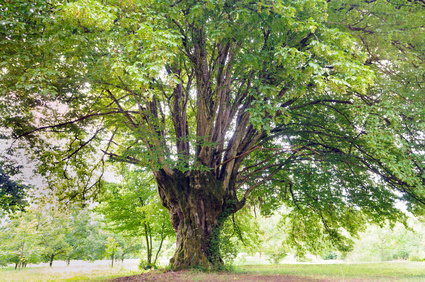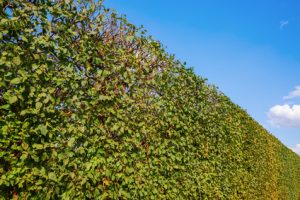Hornbeam Tree

Everything you need to know about the hornbeam tree, from identification tips to typical characteristics; how to spot disease and the best way to maintain a hornbeam tree.
The hornbeam tree is a deciduous broadleaf tree that is native to southern areas of the United Kingdom, although you will find it planted across the country. Only two species of Hornbeam are prevalent in Europe, and the tree is commonly mistaken for the beech. The name is derived from the hardness of the timber, with ‘horn’ meaning hard, and ‘beam’ being the old English name for a tree.
A mature hornbeam tree can grow up to 30 metres in height and live over 300 years, especially with regular pollarding or coppicing.
General Facts
| Known as | Hornbeam, common hornbeam, European hornbeam |
| Latin name | Carpinus betulus |
| Location | UK native, Europe, Turkey |
| Foliage | Deciduous |
| Lifespan | Up to 300 years |
Characteristics
| Height | Up to 30 metres |
| Spread | 4-8 metres |
| Appearance | A large tree with a fluted grey trunk and attractive foliage. Twigs are grey-brown and slightly hairy. |
| Leaves | Hornbeam leaves look similar to the characteristically pleated beech tree leaves. They are toothed and oval with pointed tips but are smaller – around 5-8cm long – and have deeper wrinkles than beech leaves. Leaf buds sit closely to the twigs. They are smaller than those of the beech tree and have a gentle curve at the tips. The leaves are green in summer and turn yellow in autumn. |
| Flowers | Both male and female catkin style flowers grow on the same tree. The catkins open in spring then turn to hop-like fruiting catkins which grow to 8cm. |
| Fruit | Once wind pollinated, the female catkins turns into green winged fruits called samaras which hang in clusters throughout autumn. The seeds are small nuts that grow to around 6mm. |
| Found in | Oak woodland |
Conditions
| Ideal soil | Moist but well drained, chalk, loam, clay or sand |
| Soil pH | Acid, alkaline, neutral |
| Aspect | North, south, east or west facing |
| Exposure | Full sun to partial shade; sheltered or exposed |
Threats
| Pests | Caterpillars, aphids |
| Diseases | Powdery mildews, coral spot |
Hornbeam Trees and Wildlife
As with the beech tree, the hornbeam will retain its leaves year-round if grown as hedging. This provides constant shelter for birds and small mammals, giving them the opportunity to roost, nest and forage for food.
Caterpillars of various species of moth are particularly partial to hornbeam leaves, and tits and finches enjoy the seeds when they fall in autumn, as do smaller mammals.
Hornbeam Tree Symbolism and History
Hornbeam leaves were historically used to heal wounds and halt bleeding, whilst a tonic made from the tree was used to treat tiredness and exhaustion.
These days hornbeam is used in the Bach Flower Remedies to help with concentration and mild depression as well as tiredness at the thought of doing something.
The Importance of Hornbeam Trees
Hornbeam wood is extremely hard. Its grain is very attractive, but the timber is difficult to work with which is why you won’t find it used in furniture making. Instead it is more widely used to make musical instruments as well as tool handles, butchers’ chopping boards and flooring.
Hornbeam wood burns very well, so is widely used as charcoal and firewood.
Caring for a Hornbeam Tree
The hornbeam tree is generally low maintenance and doesn’t call for much other than light pruning. Providing any dead or diseased branches are removed on a regular basis, and airflow is maximised by taking out any crossing or congested shoots, the hornbeam should pretty much take care of itself.
Coppicing or pollarding will increase the lifespan of the hornbeam tree and will encourage it to grow tall.
Be sure to carry out any non-emergency pruning during late summer or early autumn to avoid bleeding sap which can lead to diseases.
For hornbeam hedges, pruning is more important in order to maintain the shape and keep it looking nice and tidy. The hornbeam tends to have two growth spurts during the year, one being in the spring and the next in the summer. Trimming back after each growth spurt will help keep them tidy. Ensure the summer cut is carried out in September, before the leaves change colour and drop.
Pruning a deciduous hedge needs to be approached with care as leaves can easily turn brown if the trimming is too rough. Proceed carefully though and you will be able to enjoy an attractive and dense hedge.

Care should always be taken when pruning a hornbeam hedge
When you are caring for your hornbeam tree, be sure to look out for powdery mildews and coral spot. The mildew will show as a white, dusty coating on the flowers, stems and leaves. Coral spot will cause branch dieback followed by small, coral-pink fungal pustules.
A qualified tree surgeon will know exactly how and when to prune a hornbeam tree or hedge for the best possible results. They will also be well aware of how to detect the common diseases that the hornbeam tree is prone to. With early identification, they can be treated and have the best possible chance of survival.
If you have a hornbeam tree that could use some professional care, why not contact Tree Works? As fully qualified and highly experienced tree surgeons, we can offer detailed knowhow and expertise across all aspects of hornbeam tree care. For a free, no-obligation quotation, call us on 07781 416 354 or get in touch here.

